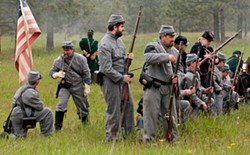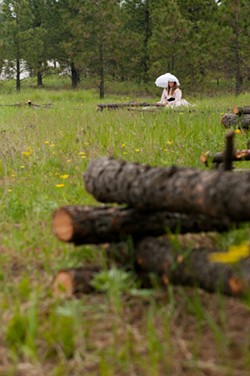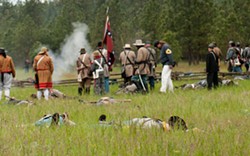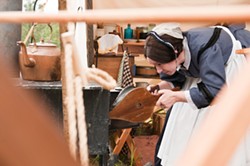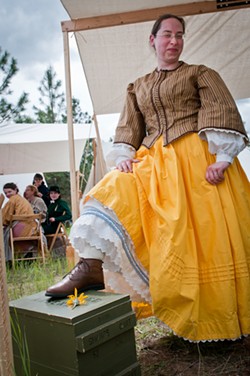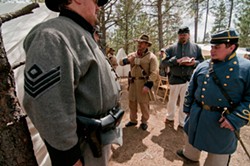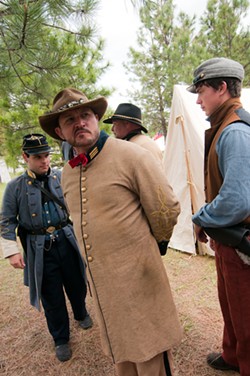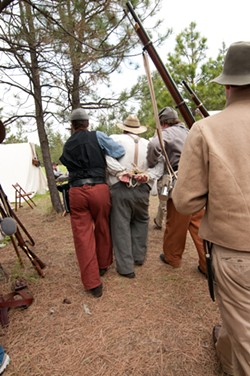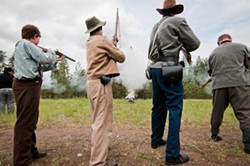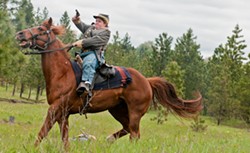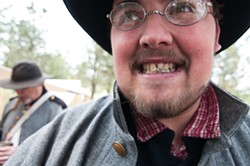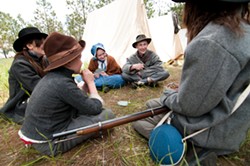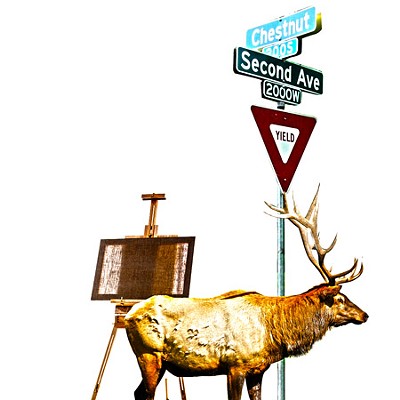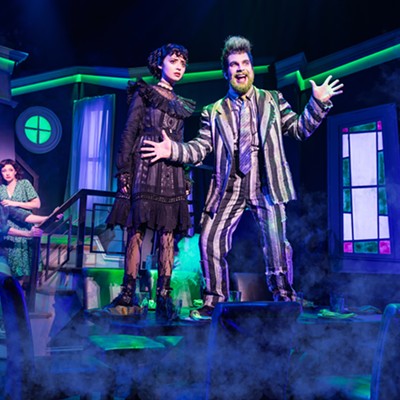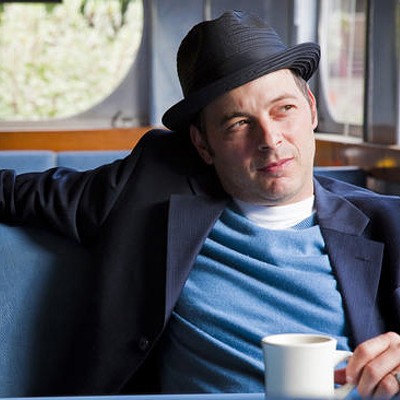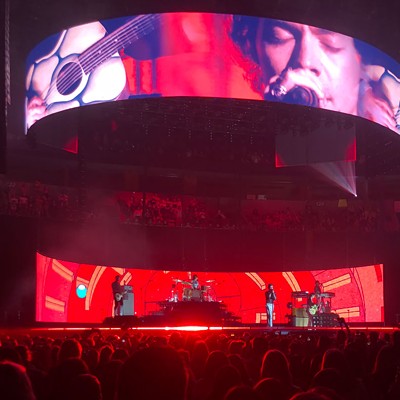Friday, June 3, 2011
WANDERLUST: Civil War re-enactors in Riverside State Park
In the 18th century, George Berkeley said, "To be is to be perceived." As I drove away from Riverside Park and the Living History Encampment staged for the Battle of Spokane Falls last Saturday, I was left to wonder: If re-enactors had no audience, would they still be playing out these roles?
My guess is yes.
Civil War re-enactors performed five battles at Riverside State Park over Memorial Day weekend.
A young woman watches the Battle of Spokane Falls unfold from afar. Re-enacting involves roles not only for soldiers, but also civilians who set up camp, organize townships, and recreate the daily practices of life in the 1860s.
Soldiers lay dead on the battlefield. One re-enactor notes that while fighting, he becomes so consumed in firing that he forgets to notice the crowd.
At the Mason-Dixon Township, two members of the re-enactment community meet at the water pump to chat about the day's events.
Anna Flores, from Lynnwood, Wash., fans a fire that cooks dinner at their camp in the Mason-Dixon Township. Her husband has always loved history and she became interested in civilian life after attending their first re-enactment over 20 years ago. When their children were grown and moved out of the house, they took to the road for events. They've been re-enacting for five years.
Heather Sturgill, a family-medicine residency coordinator in Oregon, is teased by her fellow re-enactors for revealing her pantaloons. Once a soldier in battle, Heather stopped fighting when she became pregnant with their son, who has been "living history" since he was 4 days old. For her, re-enactments are a family affair. She says it's easier to distance herself from her real personality when her mother (also a re-enactor), whom she refers to as "Mrs. Wolford," is present at events.
Members of the Seventh Tennessee Infantry stand at attention while a Confederate officer makes his rounds.
Captain Rick Montoya, a fifth-year Company Commander of the Seventh Tennessee Infantry, keeps watch over his ranks during an officer inspection. For him, reenactment is about history and shooting guns. He emphasizes that the confederate re-enactors today are "not a bunch of racists and bigots. I'm Hispanic, and we've had black men on our side in battle." He says, "This is a weekend of playing Cowboys and Indians, only now we're adults, we wear uniforms, and ... we're somewhat organized."
A "deserter," an infantry member who defected to the Union side during battle, is hand-tied and taken to a field for death by firing squad. One soldier notes, "This is Tennessee Justice," as screams of "Shoot the Traitor!" and "Let him rot!" are heard from the crowd.
Civil War firing squads were historically comprised of six soldiers — five with guns that contained only gun powder and one which fired a real bullet. All soldiers were ordered to shoot to kill, but no one knew whose weapon contained the bullet. It was a tactic used to prevent guilt amongst the troops.
A young Confederate soldier rides horseback into battle. Cavalry horses are trained specifically to work around gun-fire.
Gun powder, a mixture of sulfur, saltpeter, and charcoal, lingers on the lips and teeth of David Tipton, a third-year re-enacting veteran. Powder is torn with one hand and the mouth from a packet during battle, then packed into pistols with dry cream of wheat for weight, instead of bullets.
ABOUT WANDERLUST: The photo series is a 60-day visual story-telling project that explores the seemingly ordinary places, people and things we experience everyday. It's about being curious and asking questions. It's about wanting to know more about the world around you and seeing it from fresh perspectives. If you have ideas on where I should wander, drop me a line: [email protected].
Tags: wanderlust , photos , Culture , Arts & Culture , Image

